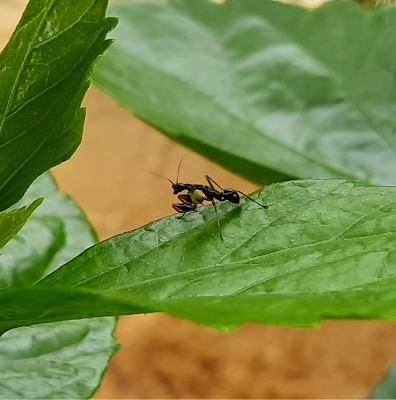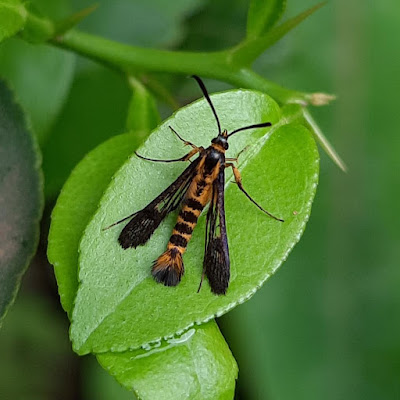Here, I revisit my earliest memories of caste based discrimination I witnessed and trace my journey of living and growing up in a casteist society.
Tracing the journey
Growing up as a kid, visiting our ancestral village during the vacation was something I looked forward to. It always filled me with excitement. Lazy mornings, no school, all the village adventures of climbing trees, picking fruits and eating them fresh from the tree, drawing water from the well! These were the things that really got me excited. My memories are filled with such joyous moments.
However during one of my visits, I witnessed an elderly relative (a man) offering food from a distance to a worker, I specifically remember the attempts made by this person in maintaining a distance. The visuals of this event is finely etched in my memory. While I did not question the man about this, or discuss it with anyone until later in my adult life, memory of this event stayed with me. I couldn't comprehend what it was as a child, but deep down, I sensed that something was fundamentally wrong, and problematic, and that stayed within me.
During our visits, I also noticed certain visitors and workers did not enter certain areas of the house for example, the pooja room (a room where idols or pictures of deities are placed and worshiped) and the kitchen. I wondered why only some people could enter these places and others could not.
As time went by, during one other visit to our village as a teenager I again noticed something odd. At the ooru jatre or village carnival, food was being served separately for 'upper' castes inside the temple while the rest of the village was served food separately outside the temple premises. Even as a teenager, I could not fully comprehend what exactly was happening. While I again felt that this was not right, neither my age nor my education helped me fully comprehend what was transpiring. I presumed that the rich and elite of the village had food separately from the poor. Even the cleaners working at the temple were not served at the temple, distinctly sending out the message that they are 'others' and do not belong to the elite group. I noticed this subtle yet evident discrimination as a teenager, but lacked the understanding of how society around me functioned in social categories of caste and class. So, I framed this as a rich vs poor problem, and that the discrimination was based on their economic status (or profession), and continued to live with this assumption. This was reaffirmed during another trip to my village, when I happened to visit the house of a domestic worker. I realized, I had to go further away from the village, and to a house, that was far away from all the 'upper' caste households, devoid of electricity and other amenities.
Identifying caste as the problem
Maturing into an adult along with exposure to popular culture, mass media helped me comprehend these problematic issues and gave me the right words to describe them. Moreover, privilege of caste invisiblises the role of caste from your experiences. Privilege is like a spot on the tip of the nose, you can't see it, but everyone else sees it. Caste, I realized was such a kind of privilege. As a child and teenager, I didn't even understand how to comprehend these issues, and thanks to the work of people who made caste visible through their art, movies, stories, articles, dramas, research, etc. I slowly gained the words and the perspectives to describe what I witnessed as a child, teenager and continue to witness the denial of caste and how it creates trauma among the people who are oppressed, delegitimised and demeaned.
As I exposed myself to the nuances of casteism, I started contemplating about the ways caste supremacy effects our society, and our outlook. Here, based on my experience and exposure to other literature, I attempt to focus on the subtleties in which caste supremacy plays out.
Supremacy around language: I grew up with the narrative that 'upper' castes, use a particular dialect or their diction was distinct. It was only later in my adult life I realised that there was a certain supremacy surrounding this particular dialect, diction or use of language, something that distinguished them from the lower castes or rather oppressed castes. I have realized how even such acts are meant to oppress people by creating 'supremacy' around a particular caste. I remember one instance in my adult life when I was asked not to use a particular word (a harmless word that we use for everyday interaction) because I was told it was a word that was mostly used by oppressed castes in that region. They didn't want me to use that word as they were afraid that use of that word would send out a message that I might be from the 'lower' caste.
Supremacy of men: Casteism and patriarchy go hand in hand. If you grow up in India, you would have heard at least one story of how a woman who is a relative or a neighbour or through rumours about how she fell in love with someone outside the caste and brought disgrace to the family. Casteism and patriarchy are a deadly combination to control women, their identity, their sexuality, what they wear, whom they should marry, etc. If you like to read more about patriarchy and what it takes to defy patriarchy read through my previous blog. Another instance is the use of sacred thread around men to discriminate who can serve food during gatherings.
The problem is not when people take pride in their language, food and ritual, it is problematic when it is used as a tool of oppression, when speaking a particular dialect, or eating certain food or performing certain ritual is seen as superior, or is seen as something that makes them 'superior' to those around them.
Social media platforms and whatsapp groups are where this narrative of supremacy is harmlessly peddled through messages that talks about how being a 'brahmin' makes you 'smart' and 'intelligent' and sets you apart from people in other caste. These kind of ideas of caste supremacy may float around in other dominant castes and within any religion. These kind of ideologies normalise the idea of supremacy and justify slow violence against people from oppressed castes.
As an adult I recently came across several 'upper' caste women marrying men from other 'upper' castes. The subtilties of how families talk about the caste of the groom is very interesting. If the groom was from a Brahmin caste from the neighbouring state they would flaunt that to everyone around them. For example, if was an Tamil Iyer, it would be made explicit and flaunted around, but if it happened to be another caste but not Brahmin, for example Nair, there would be a silence around the caste, made not so obvious to others unless someone asks.
In 2017, I remember visiting a priest's house in a village, they kindly offered us food as we arrived at the lunch time. We were happy to be offered food and we were made to sit in the front room and given food in a banana leaf, very exciting! As we were eating, the adults were inside and a child probably not older than 8 years came to us to talk. We were enjoying the conversation with her about her school, friends, etc. And as she seemed to open up, she slowly tells us that we were given food outside because we belong to the 'lower' caste. She makes a face of disgust as she utters 'lower' caste. I froze at that moment and couldn't gather my thoughts to respond. I almost wanted to leave the food and run away from the place, and never ever meet the family again. This incident shattered the narrative that 'things are changing, people are making a progress, caste is a thing of past, etc. This 8 year old was a mirror of our society and she showed me the true image that shattered the narrative of 'caste being a thing of past' that was being spun around me. I really hope she has an opportunity to critically engage with caste. I really hope our education system doesn't fail us but the current system does little to encourage anti-caste dialogue within classroom spaces, and it mostly remains as a piece of information that we learn in the textbook, as if it is something that happened in the past. Our current education system doesn't encourage students to critically engage with caste and reflect on how it affects us in our everyday lives.
Even today I meet so many people who perpetuate the ideas of caste supremacy, people who take pride in those exclusive rituals, food and language that makes them superior. It took me a lot of reading, personal experiences to understand the subtilities of caste.
As current political debates around reservations rage even as research continues to show that these policies leave gaps in praxis, lets not forget to address the elephant in the room, the idea of caste supremacy and recognise the caste based discrimination beyond the surficial level. We need to recognise the idea of caste supremacy as a tool of oppression. Unless we recognise the struggles of the oppressed caste, we are denying their experiences, their histories and hence their narratives. Many of the discrimination are subtle enough to pass through without legal consequences for the oppressor yet strong enough to rip people of their dignity, and confidence and dehumanise them. It is the everyday slow violence that escapes the mainstream discourse. It is sometimes deliberately buried deep beneath to maintain the idea of caste supremacy, to maintain power, and to maintain the status quo by political parties to benefit from these unresolved issues to further their own agendas.
I am writing this because I want to start talking about these issues of slow violence that get lost in the larger debate. I wanted to render my own account to help us question these ideologies of caste supremacy, and exclusivity. Together we need to learn and support each other in addressing these issues of subtilities of caste based discrimination in our everyday life, because reparation is an everyday act as much as it is systemic.
References:
1. https://www.vice.com/en/article/y3g9x5/india-marginalised-dalits-beef-food-identity-history-culture
2. Ramdas, S.R. Towards Food Sovereignty: Dismantling the Capitalist Brahminic-Patriarchal Food Farming Regime. Development 64, 276–281 (2021). https://doi.org/10.1057/s41301-021-00307-y4. Kumar, B. (2021). Discrimination in Indian Higher Education: Everyday Exclusion of the Dalit–Adivasi Student. Contemporary Voice of Dalit, 0(0). https://doi.org/10.1177/2455328X211039332
5. https://reutersinstitute.politics.ox.ac.uk/sites/default/files/2020-08/RISJ_Final%20Report_Tejas%20Harad_2020_FINAL%20%282%29.pdf







































